Russian empire v early XIX v. stretched from Baltic Sea to the Pacific Ocean, from the Arctic to the Northern Black Sea region and the Caucasus. The territory of Russia was more than 18 million square meters. km. In a huge multinational state lived Slavic, Turkic, Fino-Ugric peoples who professed world religions - Christianity, Islam, Buddhism. The state religion was Orthodoxy - it was adhered to by the majority of Russians, Belarusians, Ukrainians, only about 87%.
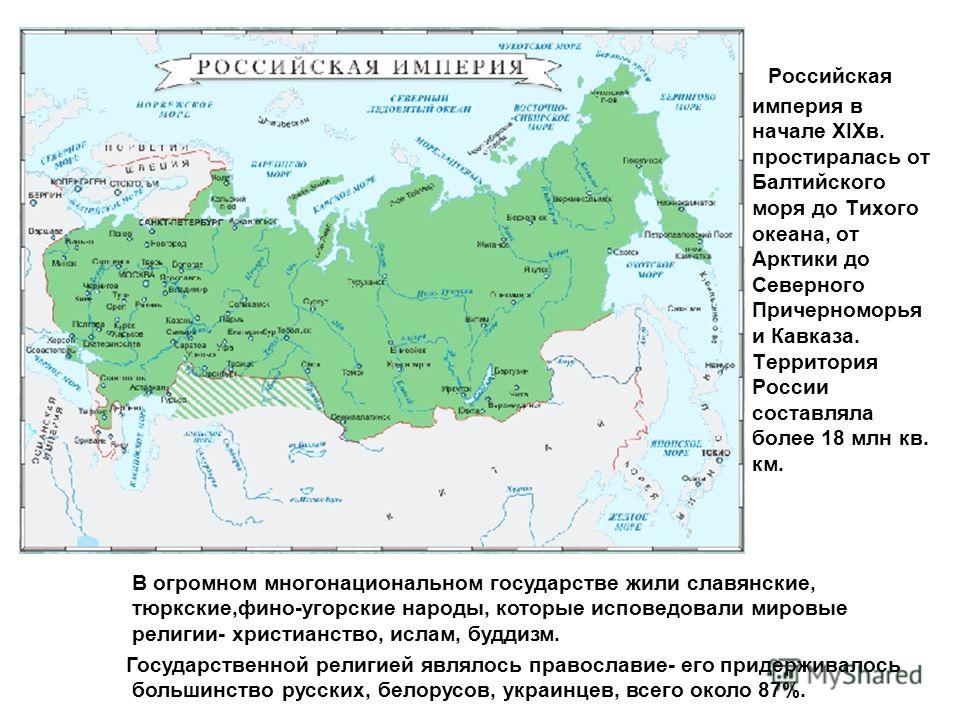
The central power of Russia is weakening, especially after the defeat of Russia in the war with Japan. The government tried with limited success to blame the Jews for this defeat, despite the indisputable fact that a significant number of Jews served in the imperial army in the war against Japan.
The pogroms took place in the "recreation area", including 37 in Podolia. Some Jews decided to fight, which led to the creation of self-defense units in Podolia. Jews continued to emigrate to record levels until emigration was interrupted by the outbreak of World War I.


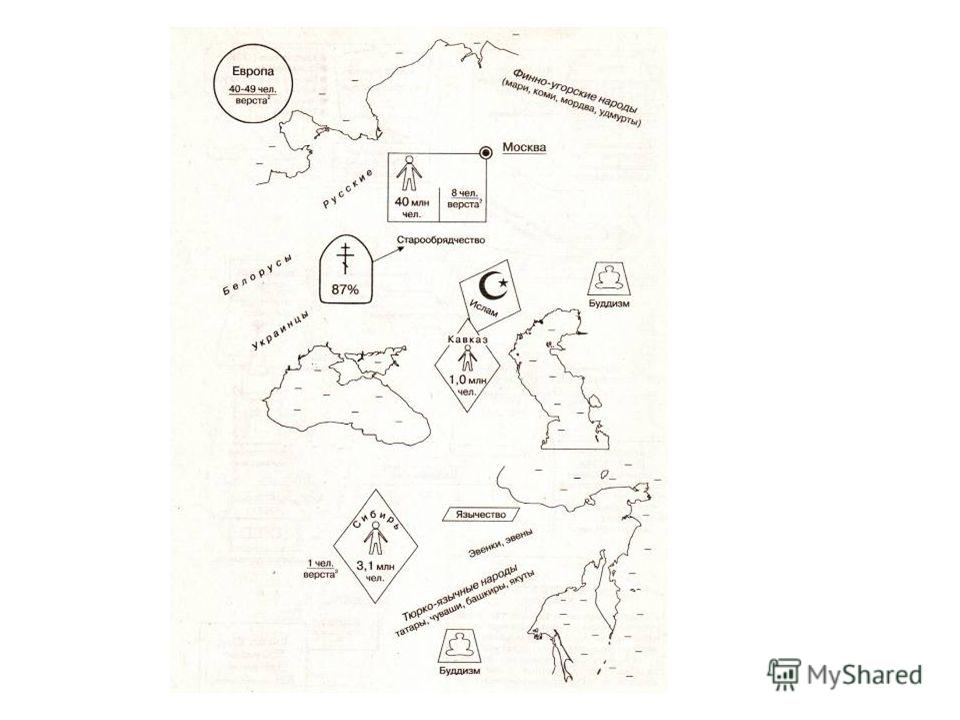
Using the map, answer the questions: -What was the name of the state at the beginning of the 19th century? -Name the borders of the Russian Empire. -Remember which territories were annexed to the Russian Empire in the 18th century? - Describe the ethnic composition of the Russian Empire. -Representatives of what religions lived on the territory of Russia.

Before the outbreak of the First World War, Podillya was the most southwestern province of tsarist Russia. In the west, Podolia was bordered by Galicia, which was part of the Austro-Hungarian Empire, in the south was Bukovina, which is also part of the Austro-Hungarian Empire. Tsarist Russia and Austria-Hungary were enemies in this conflict, and most of Podolia was occupied first by Austro-Hungarian troops and then by German troops. Before the war officially ended, Russia withdrew from the conflict after the October Revolution.
Shortly after the end of the war, Germany and Austria-Hungary were defeated. The Germans and Austro-Hungarians evacuated Podolia, leaving a void to the extent that it concerned government power. For the next 4 or 5 years, anarchy prevailed as a result of clashes between Ukrainian nationalists and Russians. Bolsheviks.

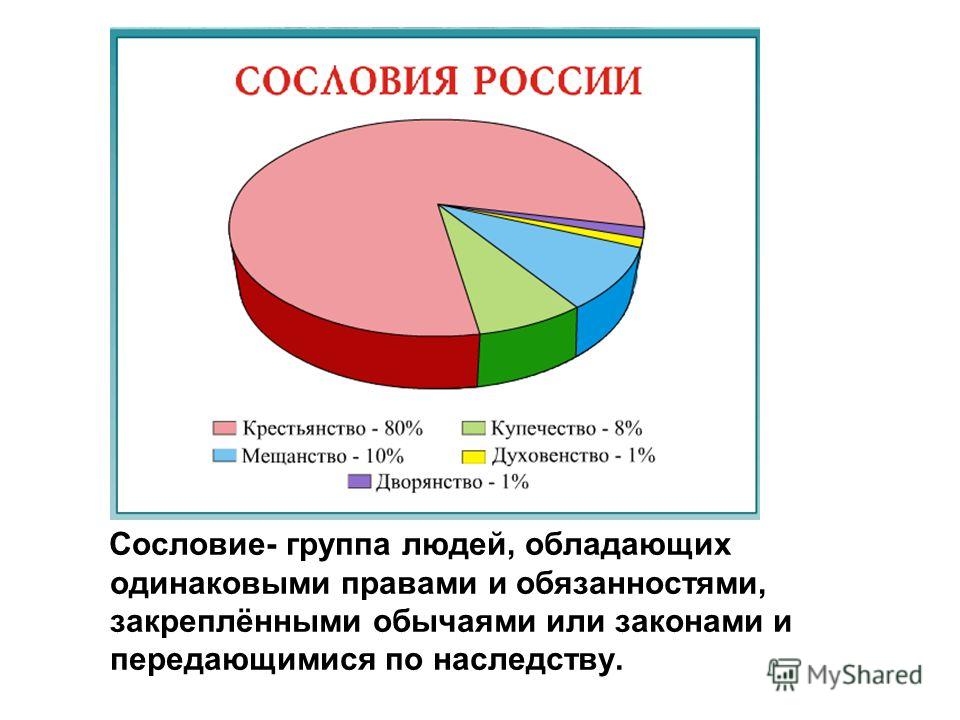
NOBILITY 1% Rights: ownership of land and peasants, estate self-government, exemption from taxes, conscription and corporal punishment ORTHODOX SPIRITUALITY 1% Rights: ownership of land and peasants, formal self-government, exemption from taxes, recruitment and corporal punishment 0 5% Rights of the 1st guild: conducting internal and foreign trade, exemption from certain taxes, recruitment and corporal punishment, estate self-government Rights of the 2nd guild: internal trade, estate self-government Duties of the 2nd guild: recruitment, payment of taxes Rights of the 3rd guild: city and county trade, estate self-government Duties of the 3rd guild: recruiting duty, payment of taxes INTERPRETATION 4% Rights: engaging in urban crafts and petty trade, estate self-government Duties: recruiting duty, paying taxes COSSACKS 6% Rights: land ownership, exemption from taxes. Duties: military service with their own equipment STATE PEASANTS 40-45% Rights: communal ownership of land, communal self-government Duties: conscription, payment of taxes FORTRESS PEASANTS 40-45% Duties as property of nobles: corvee, quitrent and other duties Duties as subjects of the state: recruiting, taxes
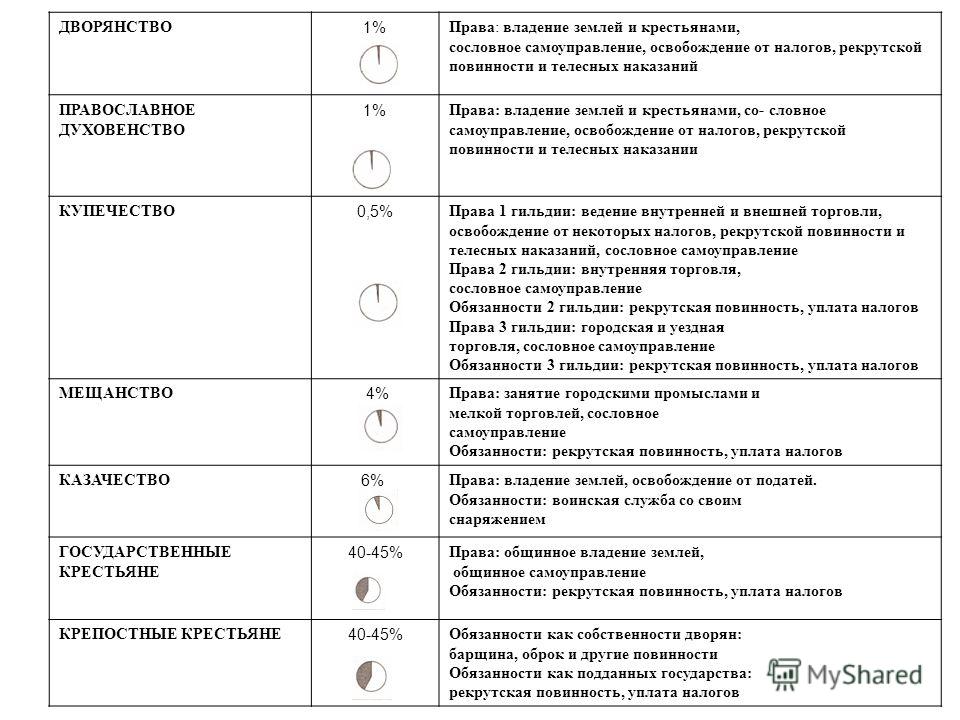
The initial reaction of Jewish communities in Ukraine was positive, but Kerensky's ruling regime in Moscow and the subsequent Bolshevik regime opposed Ukraine's independence. The seizure of power in Moscow by the Bolsheviks led to anarchy throughout the former tsarist empire, including Ukraine. Russia invaded soon after Ukraine to end the independence attempt.
In truth, most Jews did not take a position in the conflict between Ukrainian nationalists and Russian Bolsheviks, having come to the conclusion that none of the warring factions could offer them much better than a miserable life.They already knew by the tsars, during this period it was many pogroms with their procession of death and suffering.

Conclusion: The Russian Empire was a multinational state with a vast territory. Russia was an absolute monarchy. Most of the population lived in villages. In Russia there were privileged (nobility, clergy, merchants) and taxable (peasants, bourgeois) estates. The most powerless and numerous class was the peasantry, which made up more than 80% of the total population of the country, which paid taxes (corvee and quitrent).
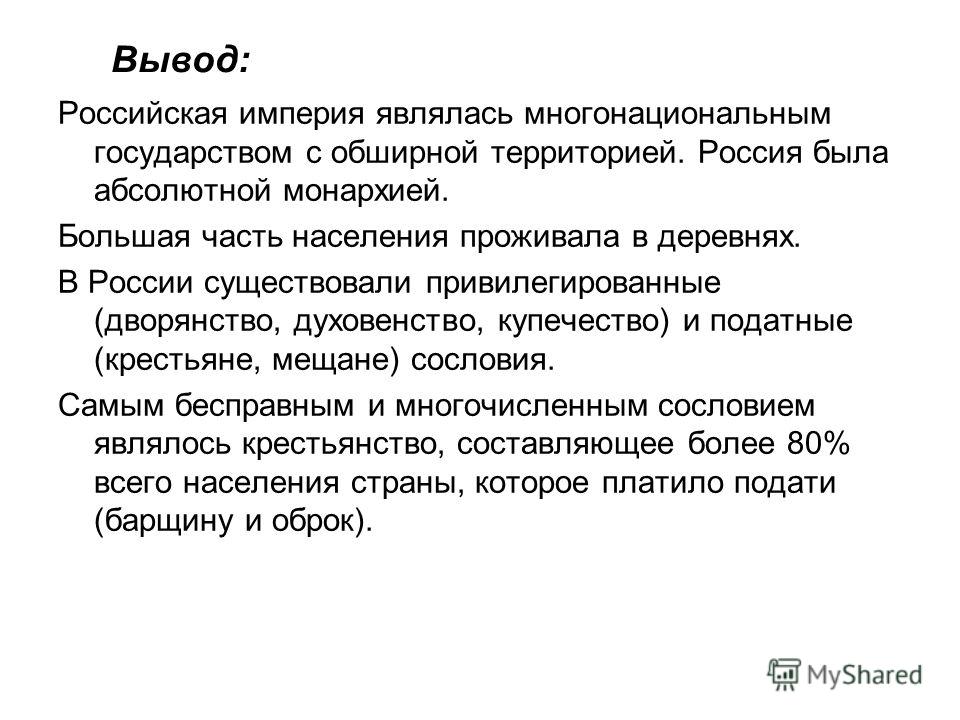
Once again the Jews were unfairly accused, this time they were pro-Bolsheviks and anti-Ukrainians, and Jewish self-defense organizations were formed in many cities, because again the “dominant” authorities were either reluctant or unable to prevent attacks on the Jewish population.
The defeat of Ukrainian nationalists by the Bolsheviks was accompanied by terrible pogroms against Jews in Ukraine, with these actions mainly led by Ukrainian soldiers supported by Ukrainian civilians who took advantage of the situation to retaliate. against Jews for their support of communism.
At the beginning of the XIX century. there was an official consolidation of the borders of Russian possessions in North America and in the north of Europe. The Petersburg conventions of 1824 defined the boundaries with American () and English possessions. The Americans pledged not to settle north of 54 ° 40 'N. NS. on the coast, and the Russians to the south. The border of the Russian and British possessions ran along the Pacific coast from 54 ° N. NS. up to 60 ° N NS. at a distance of 10 miles from the edge of the ocean, taking into account all the bends of the coast. The St. Petersburg Russian-Swedish Convention of 1826 established the Russian-Norwegian border.
In Podillia alone, 213 pogroms were registered, the overwhelming majority of which were committed by supporters of one or another of the various Ukrainian nationalist movements that were active in the region at that time. The Bolsheviks finally became the winners of the conflict, the whole of Ukraine was subjected to tough and forced adaptation to communist rule. Agrarian reform, for example, leads to the death of millions of Ukrainians by starvation.
Communism practically eliminated all these professions, driving Jews out of small towns and villages to cities, where they looked for work in state factories and warehouses as workers and employees. Though Western Europe and North America were mostly closed to these expats, in particular South America, Argentina and Brazil were relatively open.
New wars with Turkey and Iran led to the further expansion of the territory of the Russian Empire. According to the Akkerman Convention with Turkey in 1826, she secured Sukhum, Anaklia and Redut-Kale. In accordance with the Adrianople Peace Treaty of 1829, Russia received the mouth of the Danube and the Black Sea coast from the mouth of the Kuban to the post of St. Nicholas, including Anapa and Poti, as well as the Akhaltsikhe Pashalyk. In the same years, Balkaria and Karachay joined Russia. In 1859-1864. Russia included Chechnya, Dagestan and mountain peoples (Adygs, etc.), which fought wars with Russia for their independence.
This volume is devoted to the stages of the formation of the Russian Empire and the ways of integrating the conquered population groups. This process takes into account both political and sociocultural dynamics, providing a broad overview of the complexity of the Russian empire. The book is a historical analysis of the ethnic and social structure of the Tsarist Empire and its interaction with political events... The population in which there was a strong noble component, in which nobility? but also emerging markets? The fact, important, for most of the history of the "empire, was the fact that many national groups possessed a social structure" incomplete.
After the Russian-Persian war of 1826-1828. Russia received Eastern Armenia (Erivan and Nakhichevan Khanates), which was recognized by the Turkmanchay Treaty of 1828.
The defeat of Russia in the Crimean War with Turkey, acting in alliance with Great Britain, France and the Kingdom of Sardinia, led to the loss of the mouth of the Danube and the southern part of Bessarabia, which was approved by the Paris Peace of 1856. Black Sea recognized as neutral. Russian-Turkish war of 1877-1878 ended with the annexation of Ardahan, Batum and Kars and the return of the Danube part of Bessarabia (without the mouths of the Danube).
The view from the winter palace, the cultural and religious diversity of the subjects can be ordered according to certain categories, a kind of "hierarchy of nations". The most important discriminant, in the eyes of the Struga state, was the group's loyalty to the state. Simply the place of the Russians, who, according to economic and social criteria, were a "backward nation" than in many other national groups that inhabited the empire, differentiated the status of the tsarist from other European empires.
From St. Petersburg national groups were then singled out based on the pliable criterion of the estates movement. The closer to the center, were those ethnic groups whose nobility was co-opted into Russian, the most distant of them the peasant population from the nobility, group identity was denied, especially if cultural proximity allowed the rapid assimilation of the components of these populations ascended the social ladder. Meanwhile, much has changed with the spread of nationalism. "The dynastic empire of a vacillating political and pragmatic proved to be reconciled with the subversive principle" of the political order on which it is based.
The borders of the Russian Empire were established on Far East, which were previously largely uncertain and controversial. According to the Treaty of Shimoda with Japan in 1855, a Russian-Japanese maritime border was drawn in the area Kuril Islands along the Frisa Strait (between the islands of Urup and Iturup), and Sakhalin Island was recognized as undivided between Russia and Japan (in 1867 it was declared a joint possession of these countries). The delimitation of Russian and Japanese island possessions continued in 1875, when Russia, under the Petersburg Treaty, ceded the Kuril Islands to Japan (north of the Freeze Strait) in exchange for the recognition of Sakhalin as Russian possession. However, after the war with Japan in 1904-1905. According to the Portsmouth Peace Treaty, Russia was forced to cede the southern half of Sakhalin Island to Japan (from the 50th parallel).
Late anti-imperial Russian nationalism was a destructive force that the government feared and exploited with an orphan. Despite the centrifugal forces of nationalism, the empire, however, did not fall apart because of them; it was a loss of legitimacy due to the crisis caused by the First World War to be fatal.
The Romanovs were brought down by the people of Petrograd, and He adapts the rest of the country “as Trotsky wrote. Kappeler's work is pivotal in interpreting the perspectives that open up through the 'cross-sectional analysis of the structure of the Elastic Manor Movement, the national and imperial class of the company. Kappeler does not avoid the distortions inherent in any “multi-ethnic” approach; risk of becoming substantial and teleological. Creating a history of only successful national constructions, they forget about mistakes, eliminating many "future past" that seemed and in many cases were possible.
Under the terms of the Aigun (1858) treaty with China, Russia received territories on the left bank of the Amur from the Argun to the mouth, which were previously considered undivided, and Primorye (Ussuriysk Territory) was recognized as a common possession. The Peking Treaty of 1860 formalized the final annexation of Primorye to Russia. In 1871, Russia annexed the Ili region with the city of Gulja, which belonged to the Qing Empire, but after 10 years it was returned to China. At the same time, the border in the area of Lake Zaisan and the Black Irtysh was corrected in favor of Russia.
History recent years solves these problems, moreover, it is easier to solve when writing monographs instead of synthetic works based on exaggerated literature of unequal quality. Sergei Prokudin-Gorsky is a renowned Russian photographer who is best known for the color photographs he took at the time.
In the first photo, he noticed the Russian artist Leo Tolstoy. The king provides the photographer with the means and permission to pursue his life. Over the next decade, Sergei Prokudin-Gorsky toured the Empire with a special room for photographing on the rails.
In 1867, the tsarist government ceded all of its colonies to the North American United States for $ 7.2 million.
From the middle of the XIX century. continued what began in the 18th century. promotion of Russian possessions to Central Asia. In 1846, the Kazakh Senior Zhuz (Big Horde) announced the voluntary acceptance of Russian citizenship, and in 1853 the Kokand fortress Ak-Mechet was conquered. In 1860, the annexation of Semirechye was completed, and in 1864-1867. parts of the Kokand Khanate (Chimkent, Tashkent, Khojent, Zachirchik Territory) and the Bukhara Emirate (Ura-Tyube, Jizzak, Yany-Kurgan) were annexed. In 1868, the Bukhara emir recognized himself as a vassal of the Russian tsar, and the Samarkand and Katta-Kurgan districts of the emirate and the Zeravshan region were annexed to Russia. In 1869, the coast of the Krasnovodsk Bay was annexed to Russia, and the next year - the Mangyshlak Peninsula. According to the Gendemyan Peace Treaty with the Khiva Khanate in 1873, the latter recognized its vassal dependence on Russia, and the lands along the right bank of the Amu Darya became part of Russia. In 1875 the Kokand Khanate became a vassal of Russia, and in 1876 it was incorporated into the Russian Empire as the Fergana Region. In 1881-1884. the lands inhabited by the Turkmens were annexed to Russia, and in 1885 - the Eastern Pamir. Agreements of 1887 and 1895. were demarcated Russian and Afghan possessions along the Amu Darya and the Pamirs. Thus, the formation of the border of the Russian Empire in Central Asia.
About half of his negatives were confiscated by the Soviet authorities when he left. The US Library of Congress buys the rest of the photographic material from the heirs of Prokudin-Gorsky. At the end of the millennium, the Library displayed photographs at the exhibition "The Empire That Was Russia".
Trader's market in Samarkand, Uzbekistan. He sells silk, cotton and woolen fabrics and carpets. Above it can be seen a framed page of the Quran. View of an adult near Samarkand, probably a Tajik, holding a captured bird. Samarkand was known for its ethnic diversity: Uzbeks, Tajiks, Persians, Arabs, Jews and Russians.
In addition to the lands annexed to Russia as a result of wars and peace treaties, the country's territory increased due to the newly discovered lands in the Arctic: in 1867 Wrangel Island was discovered, in 1879-1881. - De Long Islands, in 1913 - Severnaya Zemlya Islands.

Camel Turkmen, dressed in traditional clothes and a hat. The bags on the animal are likely to contain cotton or wheat. Camel caravans were the most common way of transporting food, raw materials and other popular goods in Central Asia, even during the railways.
Many inhabitants of Central Asia lived a nomadic life, periodically moving to different regions in order to earn a living. The images shown in the picture are Kazakhstan in the Hungry Steppe, located in today's Kazakhstan and Uzbekistan. Samarkand is an ancient commercial, intellectual and spiritual center of the Silk Road from Europe to China and vice versa. Shown are Jewish boys with their teacher. Samarkand melon merchant in traditional Central Asian dress.
Pre-revolutionary changes Russian territory ended with the establishment of a protectorate over the Uryankhai region (Tuva) in 1914.
Geographic exploration, discovery and mapping
European part
From geographical discoveries in the European part of Russia should be called the discovery of the Donetsk ridge and the Donetsk coal basin, made by E.P. Kovalevsky in 1810-1816. and in 1828
Young Russian peasants offer wild berries to guests in the basement - traditional wooden house... The photo was taken near the small town of Kirilov. Kalganov poses with his son and granddaughter in a portrait in the industrial city of Zlatoust in the Urals. Prokuri-Gorsky travels with other people by rail to Murmansk.
Uzbek girl with traditional dress, hairstyle and jewelry. She stands on an expensive carpet in front of her yurt. Pinus Karlinski, responsible for the Chernigov Gate. It stands at the ferry pier to the Morskoy Canal in the northern part of European Russia. The photographer notes that Karlinski was 84 years old and he served for 66 years.
Despite some setbacks (in particular, the defeat in the Crimean War of 1853-1856 and the loss of territory as a result of the Russian-Japanese war of 1904-1905), by the beginning of the First World War, the Russian Empire possessed vast territories and was the largest country in the world in terms of area.
Academic expeditions of V.M.Severgin and A.I.Sherer in 1802-1804 to the north-west of Russia, to Belarus, the Baltic states and Finland were devoted mainly to mineralogical surveys.
The Urals are known for their rich iron mines and ores. The painting is a family fed by a small mine near Yekaterinburg. Workers and mentors create a photo as they prepare to pour the cement foundations of a dam across the Oka River, southeast of Moscow, near the town of Dedinovo.
A Chinese settler poses in his tea garden in Chakva, a small town north of Batumi near the Black Sea. Prisoners look at Dandana, a traditional Central Asian prison. It is essentially a hole in the ground with a building on top. The guard is armed with a Russian smoke bayonet and is wearing a Russian uniform and boots.
The period of geographical discoveries in the inhabited European part of Russia is over. In the XIX century. expeditionary research and their scientific generalization were mainly thematic. Of these, one can name the regionalization (mainly agricultural) of European Russia into eight latitudinal bands, proposed by E.F.Kankrin in 1834; the botanical and geographical zoning of European Russia by R. E. Trautfetter (1851); studies of the natural conditions of the Baltic and Caspian Seas, the state of fishing and other industries there (1851-1857), carried out by KM Baer; N. A. Severtsov's work (1855) on the fauna of the Voronezh province, in which he showed deep connections between the fauna and physical and geographical conditions, and also established the patterns of distribution of forests and steppes in connection with the nature of the relief and soils; VV Dokuchaev's classical soil research in the chernozem zone, begun in 1877; a special expedition led by V.V.Dokuchaev, organized by the Forestry Department for a comprehensive study of the nature of the steppes and finding ways to combat drought. In this expedition, the stationary research method was used for the first time.
Children sit on a hillside in a church with a bell tower in a village near White lake, northern European Russia. Workers, identified by Prokudin-Gorsky as Greeks, present themselves during tea drinking near Chakva. The region is currently in the territory of Ukraine, Moldova and Georgia, at that time there was a significant population of Greece.
Bashkerts, working on the railway line to Ust-Katov, between Ufa and Chelyabinsk in the Urals. Dagestan, which in Turkic languages means "land of mountains", contained a multi-ethnic population - Avars, lesbians, hounds, Tassaran and others. The picture shows a Sunni Muslim of undetermined ethnicity in traditional dress.
Caucasus
The annexation of the Caucasus to Russia made it necessary to explore new Russian lands, the study of which was poor. In 1829, the Caucasian expedition of the Academy of Sciences led by A. Ya. Kupfer and E. Kh. Lenz explored the Rocky Ridge in the Greater Caucasus, determined the exact heights of many mountain peaks The Caucasus. In 1844-1865. the natural conditions of the Caucasus were studied by G.V. Abikh. He studied in detail the orography and geology of the Greater and Lesser Caucasus, Dagestan, the Colchis Lowland, and compiled the first general orographic scheme of the Caucasus.
Ural
Among the works that developed the geographical concept of the Urals, are the description of the Middle and Southern Urals, made in 1825-1836. A. Ya. Kupfer, EK Hoffman, GP Gelmersen; the publication of "Natural History of the Orenburg Territory" by E. A. Eversman (1840), which gives a comprehensive characterization of the nature of this territory with a well-grounded natural division; expedition of the Russian Geographical Society to the Northern and Polar Urals (E.K. Hoffman, V.G. Bragin), during which the peak of Konstantinov Kamen was discovered, the Pai-Khoi ridge was discovered and explored, an inventory was compiled, which served as the basis for compiling a map of the explored part of the Urals ... A notable event was the trip in 1829 of the outstanding German naturalist A. Humboldt to the Urals, Rudny Altai and to the shores of the Caspian Sea.
Siberia
In the XIX century. continued exploration of Siberia, many areas of which were very poorly studied. In Altai, in the 1st half of the century, the sources of the river were discovered. Katun, Lake Teletskoye (1825-1836, A. A. Bunge, F. V. Gebler), the Chulyshman and Abakan rivers (1840-1845, P. A. Chikhachev) were explored. During his travels, P.A.Chikhachev carried out physical-geographical and geological research.
In 1843-1844. AF Middendorf collected extensive material on orography, geology, climate, permafrost and the organic world of Eastern Siberia and the Far East, for the first time he obtained information about the nature of Taimyr, Aldan Upland, Stanovoy Range. Based on the travel materials, A.F. Middendorf wrote in 1860-1878. published "A Journey to the North and East of Siberia" - one of the best examples of systematic summaries of the nature of the investigated territories. This work gives a characteristic of all the main natural components, as well as the population, shows the features of the relief of Central Siberia, the originality of its climate, presents the results of the first scientific study of permafrost, gives the zoogeographic division of Siberia.
In 1853-1855. RK Maak and AK Zondhagen investigated the orography, geology and life of the population of the Central Yakutsk Plain, the Central Siberian Plateau, the Vilyui Plateau, and surveyed the Vilyui River.
In 1855-1862. The Siberian expedition of the Russian Geographical Society carried out topographic surveys, astronomical determinations, geological and other studies in the south of Eastern Siberia and in the Amur region.
A large amount of research was carried out in the second half of the century in the mountains of the south of Eastern Siberia. In 1858, L. E. Schwartz conducted geographical research in the Sayan Mountains. During them the topographer Kryzhin carried out a topographic survey. In 1863-1866. research in Eastern Siberia and the Far East was carried out by P.A.Kropotkin, who paid special attention to the relief and geological structure. He investigated the rivers Oka, Amur, Ussuri, Sayan ridges, discovered the Patomskoe Upland. The Khamar-Daban ridge, the shores of Lake Baikal, Priangarye, the Selenga basin, Eastern Sayan were explored by A.L. Chekanovsky (1869-1875), I.D. Chersky (1872-1882). In addition, A. L. Chekanovsky studied the basins of the Nizhnyaya Tunguska and Olenek rivers, and I. D. Chersky - the upper reaches of the Nizhnyaya Tunguska. Geographic, geological and botanical survey of the Eastern Sayan was carried out during the Sayan expedition by N.P. Bobyr, L.A. Yachevsky, Ya. P. Prein. Sayanskaya research mountain system in 1903 it was continued by V.L.Popov. In 1910 he also carried out a geographical study of the border strip between Russia and China from Altai to Kyakhta.
In 1891-1892. during his last expedition, ID Chersky explored the Momsky ridge, the Nerskoe plateau, discovered three high mountain ranges beyond the Verkhoyansk ridge, Tas-Kystabyt, Ulakhan-Chistay and Tomushai.
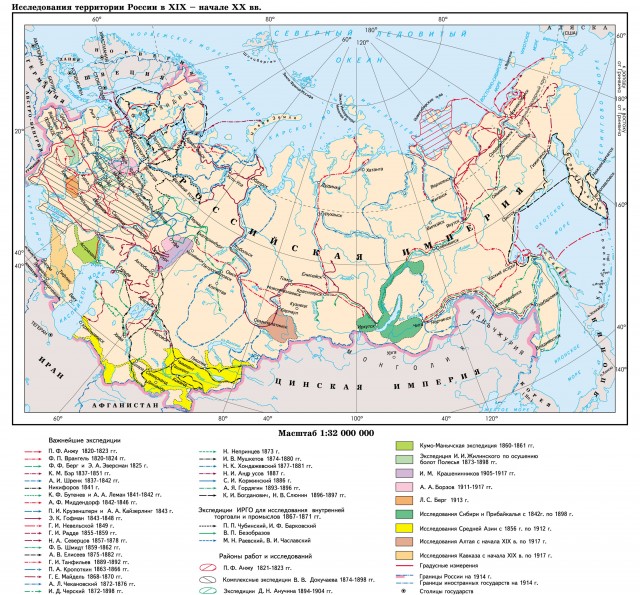
Far East
Exploration of Sakhalin, the Kuril Islands and adjacent seas continued. In 1805, I.F.Kruzenshtern explored the eastern and northern shores of Sakhalin and the northern Kuril Islands, and in 1811 V.M. Golovnin made an inventory of the middle and southern parts of the Kuril ridge. In 1849 G.I. Nevelskoy confirmed and proved the navigability of the Amur estuary for large ships. In the years 1850-1853. GI Nevelskoy and others continued their exploration of the Tatar Strait, Sakhalin, and adjacent parts of the mainland. In the years 1860-1867. Sakhalin was investigated by F.B.Schmidt, P.P. Glen, G.V. Shebunin. In the years 1852-1853. N.K Boshnyak investigated and described the basins of the Amgun and Tym rivers, lakes Everon and Chukchagirskoe, Bureinsky ridge, Khadzhi bay (Sovetskaya Gavan).
In 1842-1845. AF Middendorf and VV Vaganov explored the Shantar Islands.
In the 50-60s. XIX century. investigated the coastal parts of Primorye: in 1853 -1855. I. S. Unkovsky discovered the bays of Posiet and Olga; in 1860-1867 V. Babkin made a survey of the northern coast of the Sea of Japan and the Gulf of Peter the Great. The Lower Amur and the northern part of the Sikhote-Alin were explored in 1850-1853. G. I. Nevelsky, N. K. Boshnyak, D. I. Orlov and others; in 1860-1867 - A. Budischev. In 1858 M. Venyukov explored the Ussuri River. In 1863-1866. the Amur and Ussuri rivers were studied by P.A. Kropotkin. In 1867-1869. N.M. Przhevalsky made a major trip to the Ussuriysk Territory. He carried out comprehensive studies of the nature of the basins of the Ussuri and Suchan rivers, crossed the Sikhote-Alin ridge.
middle Asia
As individual parts of Kazakhstan and Central Asia were annexed to the Russian Empire, and sometimes even preceding it, Russian geographers, biologists and other scientists studied and studied their nature. In the years 1820-1836. organic world Mugodzhar, General Syrta and the Ustyurt plateau were explored by E.A. Eversman. In 1825-1836. carried out a description of the eastern coast of the Caspian Sea, the Mangystau and Bolshoi Balkhan ridges, the Krasnovodsk plateau GS Karelin and I. Blaramberg. In 1837-1842. A.I.Shrenk studied East Kazakhstan.
In 1840-1845. the Balkhash-Alakol depression was discovered (A.I.Shrenk, T.F.Nifant'ev). From 1852 to 1863 T.F. Nifantiev carried out the first surveys of lakes Balkhash, Issyk-Kul, Zaisan. In 1848-1849. A.I.Butakov made the first survey The aral sea, a number of islands have been discovered, Chernyshev Bay.
Valuable scientific results, especially in the field of biogeography, were brought by the expedition of 1857 I. G. Borshchov and N. A. Severtsov to Mugodzhary, the Emba river basin and the Bolshie Barsuki sands. In 1865 I. G. Borshchov continued his research on the vegetation and natural conditions of the Aral-Caspian region. He considered steppes and deserts as natural geographic complexes and analyzed the interrelationships between relief, moisture, soils and vegetation.
Since the 1840s. exploration of the high mountains of Central Asia began. In 1840-1845. A.A. Leman and Ya.P. Yakovlev discovered the Turkestan and Zeravshan ranges. In 1856-1857. P.P.Semenov initiated the scientific research of the Tien Shan. Research in the mountains of Central Asia flourished during the period of the expeditionary leadership of P.P. Semyonov (Semyonov-Tyan-Shansky). In the years 1860-1867. NA Severtsov explored the Kyrgyz and Karatau ridges, discovered the Karzhantau, Pskemsky and Kakshaal-Too ridges in the Tien Shan, in 1868-1871. A.P. Fedchenko explored the Tien Shan, Kuhistan, Alay and Zaalaysky ridges. N. A. Severtsov, A. I. Skassi discovered the Rushan Range and the Fedchenko Glacier (1877-1879). The research carried out made it possible to distinguish the Pamirs into a separate mountain system.
Research in the desert regions of Central Asia was carried out by N. A. Severtsov (1866-1868) and A. P. Fedchenko in 1868-1871. (Kyzylkum desert), V.A.Obruchev in 1886-1888 (Karakum desert and ancient valley Uzboy).
Comprehensive research The Aral Sea in 1899-1902 conducted by L. S. Berg.
North and Arctic
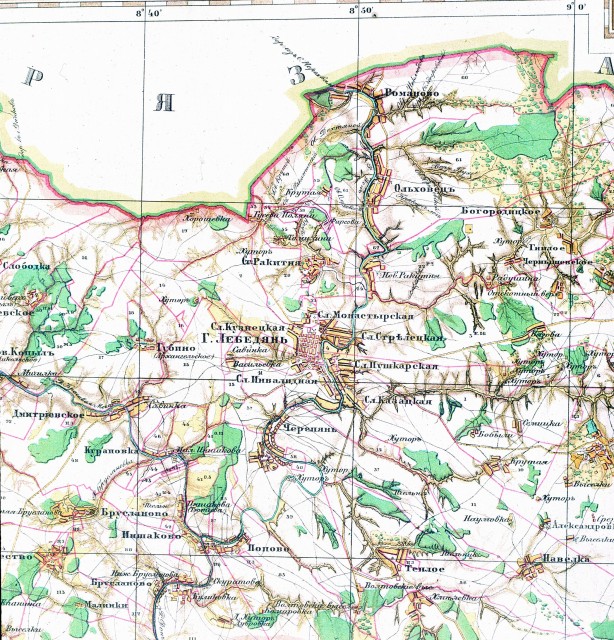
At the beginning of the XIX century. the opening of the New Siberian Islands ended. In 1800-1806 Ya. Sannikov carried out inventories of the islands of Stolbovoy, Faddeevsky, New Siberia. In 1808, Belkov discovered the island, which received the name of its discoverer - Belkovsky. In 1809-1811. the expedition of M.M.Gedenshtrom visited the Novosibirsk Islands. In 1815 M. Lyakhov discovered the islands of Vasilievsky and Semyonovsky. In 1821-1823. P.F. Anjou and P.I. Ilyin carried out instrumental studies, culminating in the compilation of an accurate map of the Novosibirsk Islands, explored and described the Semyonovsky, Vasilievsky, Stolbovoi islands, the coast between the mouths of the Indigirka and Olenek rivers, and discovered the East Siberian polynya.
In the years 1820-1824. F.P. Wrangel in very difficult natural conditions a trip was made to the north of Siberia and the Arctic Ocean, the coast from the mouth of the Indigirka to the Kolyuchinskaya Bay (Chukotka Peninsula) was explored and described, the existence of Wrangel Island was predicted.
Research was carried out in Russian possessions in North America: in 1816, O. E. Kotsebue discovered in the Chukchi Sea off the western coast of Alaska a large bay named after him. In 1818-1819. East Coast Bering Sea investigated by P.G. Korsakovsky and P.A. Ustyugov, the delta was discovered largest river Alaska - Yukon. In 1835-1838. the lower and middle reaches of the Yukon were studied by A. Glazunov and V.I. Malakhov, and in 1842-1843. - Russian naval officer L.A. Zagoskin. He also described the interior regions of Alaska. In 1829-1835. the coast of Alaska was explored by F.P. Wrangel and D.F. Zarembo. In 1838 A.F. Kashevarov described the northwestern coast of Alaska, and P.F.Kolmakov discovered the Innoko River and the Kuskokwim ridge (Kuskokwim). In 1835-1841. D.F. Zarembo and P. Mitkov completed the discovery of the Alexander Archipelago.
The archipelago has been intensively explored New earth... In 1821-1824. FP Litke in the Novaya Zemlya brig investigated, described and made a map of the western coast of Novaya Zemlya. Attempts to make an inventory and map the eastern coast of Novaya Zemlya were unsuccessful. In 1832-1833. P.K.Pakhtusov made the first inventory of the entire eastern coast of the South Island of Novaya Zemlya. In 1834-1835. P.K.Pakhtusov and in 1837-1838. A. K. Tsivol'ka and S. A. Moiseev described the eastern coast of the Northern Island up to 74.5 ° N. sh., the Strait of Matochkin Shar is described in detail, the island of Pakhtusov is discovered. The description of the northern part of Novaya Zemlya was made only in 1907-1911. V.A. Rusanov. Expeditions led by I. N. Ivanov in 1826-1829 managed to compile an inventory of the southwestern part Kara Sea from Cape Kanin Nos to the mouth of the Ob. The studies carried out made it possible to begin the study of vegetation, fauna and geological structure Novaya Zemlya (K.M.Bair, 1837). In 1834-1839, especially during a large expedition in 1837, A.I.Shrenk explored the Chesh Bay, the coast of the Kara Sea, the Timan Ridge, Vaigach Island, the Pai-Khoi ridge, and the polar Urals. Exploration of this area in 1840-1845. continued by A.A.Keyserling, who surveyed the Pechora River, explored the Timan Ridge and the Pechora Lowland. Comprehensive studies of the nature of the Taimyr Peninsula, the Putorana Plateau, the North Siberian Lowland were carried out in 1842-1845. A. F. Middendorf. In 1847-1850. The Russian Geographical Society organized an expedition to the Northern and Polar Urals, during which the Pai-Khoi ridge was thoroughly explored.
In 1867 Wrangel Island was discovered, an inventory of the southern coast of which was made by the captain of the American whaling ship T. Long. In 1881, the American explorer R. Berry described the eastern, western and most of the northern coast of the island, and for the first time explored the inner regions of the island.

In 1901, the Russian icebreaker Ermak visited Franz Josef Land, under the command of S.O. Makarov. In 1913-1914. a Russian expedition led by G. Ya. Sedov spent the winter on the archipelago. At the same time, a group of participants in the troublesome expedition of G. L. Brusilov on the ship “St. Anna ”, headed by navigator V. I. Albanov. Despite the difficult conditions, when all the energy was directed to the preservation of life, V.I.
In 1878-1879. During the two navigations, the Russian-Swedish expedition led by the Swedish scientist N. AE Nordenskjöld on the small steam-sailing vessel "Vega" passed the Northern Sea Route from west to east for the first time. This proved the possibility of navigation along the entire Eurasian Arctic coast.
In 1913, the Hydrographic Expedition of the Arctic Ocean under the leadership of B.A. the islands, called the Land of Emperor Nicholas II (now - Severnaya Zemlya), approximately mapping its eastern, and next year - the southern shores, as well as the island of Tsarevich Alexei (now - Small Taimyr). The western and northern shores of Severnaya Zemlya remained completely unknown.
Russian Geographical Society
The Russian Geographical Society (RGO), established in 1845, (since 1850 - the Imperial Russian Geographical Society - IRGO) has contributed greatly to the development of domestic cartography.
In 1881, the American polar explorer J. De Long discovered the islands of Jeannette, Henrietta and Bennett to the north-east of New Siberia. This group of islands was named after its discoverer. In 1885-1886. the study of the Arctic coast between the Lena and Kolyma rivers and the Novosibirsk Islands was carried out by A. A. Bunge and E. V. Toll.
Already at the beginning of 1852 it published its first twenty-five verst (1: 1,050,000) map of the Northern Urals and the Pai-Khoi coastal ridge, compiled on the basis of the materials of the Ural expedition of the Russian Geographical Society in 1847-1850. For the first time, the Northern Urals and the Pai-Khoi coastal ridge were depicted on it with great accuracy and detail.
The Geographical Society also published 40-verst maps of the river regions of the Amur, the southern part of the Lena and Yenisei, and about. Sakhalin on 7 sheets (1891).
Sixteen large expeditions of the IRGO, led by N.M. Przhevalsky, G.N. Potanin, M.V. Pevtsov, G.E. Grumm-Grzhimailo, V.I. Obruchev, made a great contribution to the filming of Central Asia. During these expeditions, 95,473 km were covered and photographed (of which more than 30,000 km were accounted for by N.M. Przhevalsky), 363 astronomical points were determined and the heights of 3533 points were measured. The position of the main mountain ranges was clarified and river systems, as well as lake basins in Central Asia. All this greatly contributed to the creation of modern physical map Central Asia.
The heyday of the expeditionary activity of the IRGO falls on 1873-1914, when the Grand Duke Constantine was at the head of the society, and P.P.Semenov-Tyan-Shansky was the vice-chairman. During this period, expeditions were organized to Central Asia, Eastern Siberia and other regions of the country; two polar stations were created. Since the mid-1880s. The expeditionary activities of the society are increasingly specialized in certain areas - glaciology, limnology, geophysics, biogeography, etc.

The IRGO made a great contribution to the study of the country's relief. To process the levelings and make a hypsometric map, a hypsometric commission of the IRGO was created. In 1874, the IRGO under the leadership of A.A. Siberian leveling: from the village of Zverinogolovskaya in the Orenburg region to Lake Baikal. The materials of the hypsometric commission were used by A. A. Tillo to compile the "Hypsometric map of European Russia" on a scale of 60 versts in an inch (1: 2,520,000), published by the Ministry of Railways in 1889. More than 50 thousand high-altitude marks obtained as a result of leveling. The map revolutionized the understanding of the structure of the relief of this territory. On it, the orography of the European part of the country was presented in a new way, which has not changed in its main features to the present day, for the first time the Central Russian and Volga Uplands were depicted. In 1894, the Forestry Department under the leadership of A.A.Tillo with the participation of S.N. Nikitin and D.N. Anuchin organized an expedition to study the sources of the main rivers of European Russia, lakes).
The military topographic service, with the active participation of the Imperial Russian Geographical Society, carried out a large number of pioneering reconnaissance surveys in the Far East, Siberia, Kazakhstan and Central Asia, during which maps of many territories were compiled, which were previously “white spots” on the map.
Territory mapping in the 19th and early 20th centuries.
Topographic and geodetic works

In 1801-1804. His Majesty's Own Map Depot issued the first state multi-sheet (107 sheets) map at a scale of 1: 840,000, which covered almost all of European Russia and was named the Capital Map. Its content was based mainly on the materials of the General Survey.
In 1798-1804. The Russian General Staff under the leadership of Major General F.F. (1743) to the world. Survey materials, preserved in the form of a handwritten four-volume atlas, were widely used in the compilation of various maps at the beginning of the 19th century.
After 1809, the topographic services of Russia and Finland were merged. At the same time, the Russian army received a ready-made educational institution for the training of professional topographers - a military school founded in 1779 in the village of Gappaniemi. On the basis of this school, on March 16, 1812, the Gappaniem topographic corps was established, which became the first special military topographic and geodetic educational institution in the Russian Empire.
In 1815, the ranks of the Russian army were replenished with officers-topographers of the General Quartermaster of the Polish Army.
In 1819, topographic surveys on a scale of 1: 21,000 began in Russia, based on triangulation and carried out mainly with the help of a scaler. In 1844, they were replaced by surveys at a scale of 1: 42,000.

On January 28, 1822, the Corps of Military Topographers was established at the General Staff of the Russian Army and the Military Topographic Depot. State topographic mapping has become one of the main tasks of military topographers. FF Schubert, a remarkable Russian surveyor and cartographer, was appointed the first director of the Corps of Military Topographers.
In the years 1816-1852. in Russia, the largest triangulation work for that time was carried out, stretching 25 ° 20 ′ along the meridian (together with the Scandinavian triangulation).
Under the leadership of F.F.Schubert and K.I.Tenner, intensive instrumental and semi-instrumental (route) surveys began, mainly in the western and northwestern provinces of European Russia. Based on the materials of these surveys in the 20-30s. XIX century. Semitopographic (semi-topographic) maps of the provinces were compiled and engraved on a scale of 4-5 versts per inch.
The military topographic depot began in 1821 to draw up a survey and topographic map of European Russia on a scale of 10 versts per inch (1: 420,000), which is extremely necessary not only for the military, but also for all civilian departments. The special ten verst of European Russia is known in the literature as the Schubert Map. Work on the creation of the map continued with interruptions until 1839. It was published on 59 sheets and three flaps (or half sheets).
A large amount of work was carried out by the Corps of Military Topographers in different parts of the country. In 1826-1829. were drawn up detailed maps scale 1: 210,000 of the Baku province, the Talish Khanate, the Karabakh province, the plan of Tiflis, etc.
In 1828-1832. a survey of Moldova and Wallachia was carried out, which became a model of the work of its time, since it was based on a sufficient number of astronomical points. All maps were compiled into an atlas of 1:16 000. The total survey area reached 100 thousand square meters. versts
Since the 30s. geodetic and boundary works began to be carried out on. Geodetic points carried out in 1836-1838. triangulations became the basis for the creation of accurate topographic maps of the Crimea. Geodetic networks developed in the Smolensk, Moscow, Mogilev, Tver, Novgorod provinces and in other regions.
In 1833, the head of the KBT, General FF Schubert, organized an unprecedented chronometric expedition to the Baltic Sea. As a result of the expedition, the longitudes of 18 points were determined, which, together with 22 points connected with them trigonometrically, provided a reliable basis for surveying the coast and soundings of the Baltic Sea.
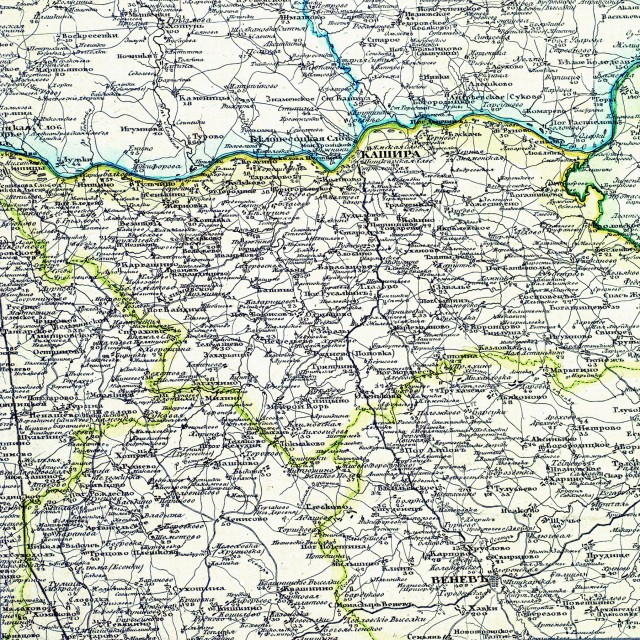
From 1857 to 1862 Under the guidance and funds of the IRGO, the Military Topographic Depot compiled and published on 12 sheets a general map of European Russia and the Caucasian Territory on a scale of 40 versts per inch (1: 1,680,000) with an explanatory note. On the advice of V. Ya. Struve, the map for the first time in Russia was created in the Gaussian projection, and Pulkovsky was taken as the initial meridian on it. In 1868, the map was published, and later it was reprinted several times.
In subsequent years, a five-verst map on 55 sheets, a twenty-verst and an orographic forty-verst map of the Caucasus were published.
Among the best cartographic works of the IRGO is the "Map of the Aral Sea and the Khiva Khanate with their environs" compiled by Ya. V. Khanykov (1850). The map was published in French by the Paris Geographical Society and, at the suggestion of A. Humboldt, was awarded the Prussian Order of the Red Eagle, 2nd degree.
The Caucasian military topographic department under the leadership of General II Stebnitsky conducted reconnaissance in Central Asia along the eastern coast of the Caspian Sea.
In 1867, a Cartographic Establishment was opened at the Military Topographic Department of the General Staff. Together with the private cartographic institution of A.A. Ilyin opened in 1859, they were the direct predecessors of modern domestic cartographic factories.
Relief maps took a special place among the various products of the Caucasian WTO. The large relief map was completed in 1868 and exhibited at the Paris Exhibition in 1869. This map is made for horizontal distances at a scale of 1: 420,000, and for vertical distances - 1:84 000.
The Caucasian military topographic department under the leadership of I.I.
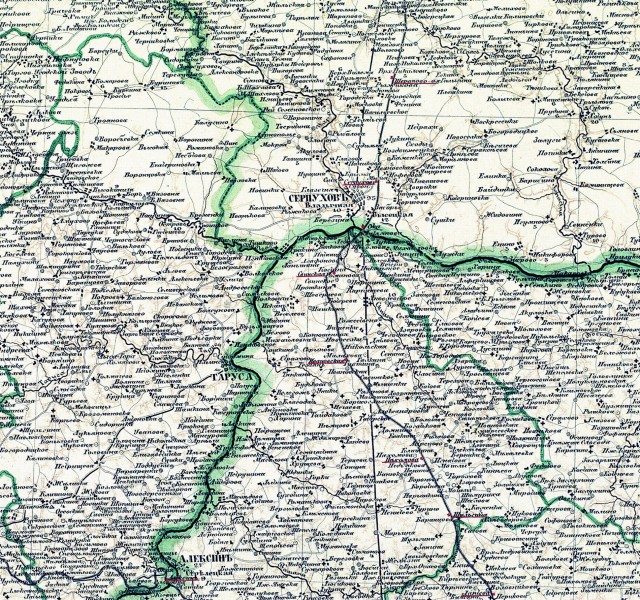
Work was also carried out on topogeodetic preparation of the territories of the Far East. Thus, in 1860, the position of eight points was determined near the western coast of the Sea of Japan, and in 1863, 22 points were determined in the Peter the Great Bay.
The expansion of the territory of the Russian Empire was reflected in many maps and atlases published at that time. This, in particular, is the “General Map of the Russian Empire and the Kingdom of Poland and the Grand Duchy of Finland” from the “Geographical Atlas of the Russian Empire, the Kingdom of Poland and the Grand Duchy of Finland” by V.P. Pyadyshev (St. Petersburg, 1834).
Since 1845, one of the main tasks of the Russian military topographic service has been the creation of a military topographic map of Western Russia on a scale of 3 versts per inch. By 1863, 435 sheets of the military topographic map had been published, and by 1917 - 517 sheets. On this map, the relief was conveyed by strokes.
In 1848-1866. Under the leadership of Lieutenant General AI Mende, surveys were carried out aimed at creating topographic landmarks and atlases and descriptions for all provinces of European Russia. During this period, work was carried out on an area of about 345,000 square meters. versts Tverskaya, Ryazan, Tambov and Vladimirskaya provinces were mapped on a scale of one verst per inch (1:42 000), Yaroslavskaya - two versts per inch (1:84 000), Simbirskaya and Nizhegorodskaya - three versts per inch (1: 126 000) and Penza province - on a scale of eight versts per inch (1: 336,000). Based on the survey results, the IRGO published multicolored topographic boundary atlases of the Tver and Ryazan provinces (1853-1860) on a scale of 2 versts per inch (1:84 000) and a map of the Tver province on a scale of 8 versts per inch (1: 336 000).
Filming Mende had an undoubted impact on the further improvement of the methodology of state mapping. In 1872, the Military Topographic Department of the General Staff began work on updating the three-verst map, which actually led to the creation of a new standard Russian topographic map at a scale of 2 versts per inch (1: 84,000), which was the most detailed source of information about the area used in troops and the national economy up to the 30s. XX century. A two-verst military topographic map was published for the Kingdom of Poland, parts of the Crimea and the Caucasus, as well as the Baltic states and areas around Moscow and St. Petersburg. It was one of the first Russian topographic maps on which the relief was depicted as horizontal lines.
In 1869-1885. a detailed topographic survey of Finland was carried out, which was the beginning of the creation of a state topographic map on a scale of one verst in an inch - the highest achievement of pre-revolutionary military topography in Russia. The one-verst maps covered the territory of Poland, the Baltic states, southern Finland, Crimea, the Caucasus and parts of southern Russia north of Novocherkassk.
By the 60s. XIX century. The Special Map of European Russia by FF Schubert on a scale of 10 versts per inch is outdated. In 1865, the editorial commission appointed Captain of the General Staff I.A. new cartographic work. In 1872, the compilation of all 152 sheets of the map was completed. The ten versts were reprinted many times and partially supplemented; in 1903 it consisted of 167 sheets. This map was widely used not only for military purposes, but also for scientific, practical and cultural purposes.
By the end of the century, the work of the Corps of Military Topographers continued to create new maps for sparsely populated areas, including the Far East and Manchuria. During this time, several reconnaissance detachments traveled more than 12 thousand miles, performing route and eye surveys. Based on their results, topographic maps were later compiled on a scale of 2, 3, 5 and 20 versts per inch.
In 1907, a special commission was created at the General Staff to develop a plan for future topographic and geodetic works in European and Asian Russia, chaired by the head of the ITC, General ND Artamonov. It was decided to develop a new triangulation of the 1st class according to a specific program proposed by General II Pomerantsev. The KVT started implementing the program in 1910. By 1914, the bulk of the work had been completed.
By the beginning of the First World War, a large volume of large-scale topographic surveys had been completed in Poland completely, in the south of Russia (triangle Chisinau, Galati, Odessa), in Petrograd and Vyborg provinces in part; on a verst scale in Livonia, Petrograd and Minsk provinces, and partly in the Transcaucasus, on the northeastern coast of the Black Sea and in the Crimea; on a two-verst scale - in the north-west of Russia, to the east of the survey sites on a semi- and verst scale.
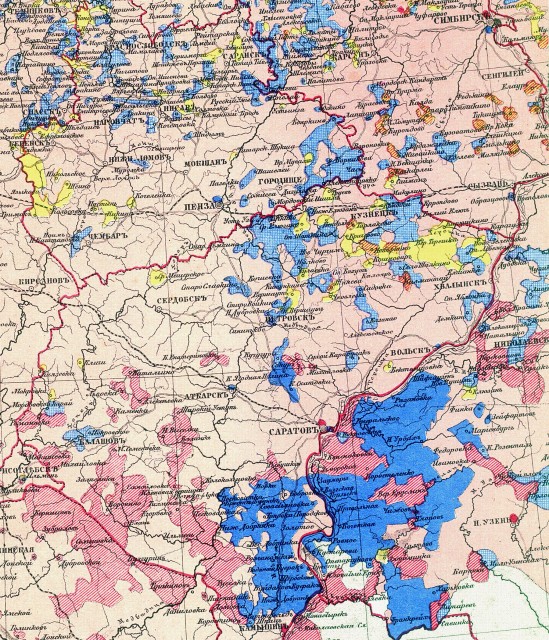
The results of topographic surveys of the previous and pre-war years made it possible to compile and publish a large volume of topographic and special military maps: a half-verst map of the Western border area (1:21 000); milestone map of the Western border area, Crimea and Transcaucasia (1:42 000); military topographic two-verst map (1:84 000), three-verst map (1: 126 000) with relief, expressed by strokes; semi-topographic 10-verst map of European Russia (1: 420,000); military road 25-verst map of European Russia (1: 1,050,000); 40-verst Strategic Map Central Europe(1: 1,680,000); maps of the Caucasus and neighboring foreign states.
In addition to the above maps, the Military Topographic Department of the Main Directorate of the General Staff (GUGSH) prepared maps of Turkestan, Central Asia and adjacent states, Western Siberia, the Far East, as well as maps of the entire Asian Russia.
During the 96 years of its existence (1822-1918) the corps of military topographers carried out an enormous amount of astronomical, geodetic and cartographic work: geodetic points were identified - 63 736; astronomical points (in latitude and longitude) - 3900; 46 thousand km of leveling passages were laid; instrumental topographic surveys were carried out on a geodetic basis on a different scale on an area of 7,425,319 km2, and semi-instrumental and visual surveys - on an area of 506,247 km2. In 1917, the supply of the Russian army was 6739 nomenclatures of maps of various scales.
In general, by 1917, a huge field survey material was obtained, a number of remarkable cartographic works were created, however, the coverage of the topographic survey of the territory of Russia was uneven, a significant part of the territory remained unexplored in topographic terms.
Exploration and mapping of seas and oceans
The achievements of Russia in the study and mapping of the World Ocean were significant. One of the important incentives for these studies in the 19th century, as before, was the need to ensure the functioning of Russian overseas possessions in Alaska. To supply these colonies, round-the-world expeditions were regularly equipped, which, starting with the maiden voyage in 1803-1806. on the ships "Nadezhda" and "Neva" under the leadership of IF Kruzenshtern and Yu. V. Lisyansky, made many remarkable geographical discoveries and significantly increased the cartographic study of the World Ocean.
In addition to hydrographic work carried out almost annually off the coast of Russian America by officers of the Russian Navy, participants round the world expeditions, employees of the Russian-American Company, among whom were such brilliant hydrographers and scientists as F.P. Wrangel, A.K. Etolin and M.D. Tebenkov, continuously enriched knowledge about the North Pacific Ocean and improved the navigational charts of these regions. Especially great was the contribution of M. D. Tebenkov, who compiled the most detailed Atlas of the Northwestern shores of America from the Bering Strait to Cape Corrientes and the Aleutian Islands with the addition of some places on the northeastern coast of Asia, published by the St. Petersburg Maritime Academy in 1852.
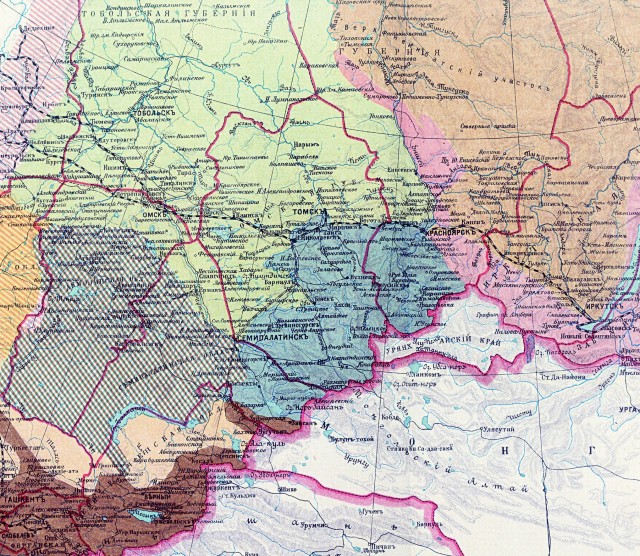
In parallel with the study of the northern part of the Pacific Ocean, Russian hydrographers actively explored the coasts of the Arctic Ocean, thus contributing to the final formulation of the geographical concepts of the polar regions of Eurasia and laying the foundations for the subsequent development of the Northern Sea Route. Thus, most of the coasts and islands of the Barents and Kara Seas were described and mapped in the 1920s and 1930s. XIX century. expeditions by F.P. Litke, P.K. To solve the problem of the development of transport links of European Pomorie with Western Siberia expeditions were equipped for a hydrographic inventory of the coast from Kanin Nos to the mouth of the Ob River, the most effective of which were the Pechora expedition of I. N. Ivanov (1824) and the hydrographic inventory of I. N. Ivanov and I. A. Berezhnykh (1826-1828). The maps compiled by them had a solid astronomical and geodetic basis. Exploration of sea coasts and islands in the north of Siberia at the beginning of the 19th century. were largely stimulated by the discoveries by Russian industrialists of islands in the Novosibirsk archipelago, as well as by the search for mysterious northern lands (“Sannikov Land”), islands north of the mouth of the Kolyma (“Andreev Land”), etc. In 1808-1810. During an expedition led by M.M.Gedenshtrom and P. Pshenitsyn, which explored the islands of New Siberia, Faddeevsky, Kotelny and the strait between the latter, a map of the Novosibirsk archipelago as a whole was created for the first time, as well as the continental sea coasts between the mouths of the Yana and Kolyma rivers. For the first time, a detailed geographical description of the islands has been completed. In the 20s. Yanskaya (1820-1824) under the leadership of P.F. Anzhu and Kolymskaya (1821-1824) - under the leadership of F.P. These expeditions carried out on an expanded scale the program of work of the expedition of M. M. Gedenshtrom. They were supposed to take pictures of the banks from the Lena River to the Bering Strait. The main merit of the expedition was the compilation of a more accurate map of the entire continental coast of the Arctic Ocean from the Olenek River to the Kolyuchinskaya Bay, as well as maps of the Novosibirsk, Lyakhovsky and Medvezhy Islands group. In the eastern part of the map, Wrangel was indicated according to data local residents, an island with the inscription “Mountains are seen from Cape Yakan in summer time”. This island was also depicted on maps in the atlases of I.F.Kruzenshtern (1826) and G.A.Sarychev (1826). In 1867 it was discovered by the American navigator T. Long and was named after Wrangel to commemorate the merits of the remarkable Russian polar explorer. The results of the expeditions of PF Anjou and FP Wrangel were summarized in 26 manuscript maps and plans, as well as in scientific reports and works.
Not only scientific, but also of tremendous geopolitical significance for Russia were held in the middle of the 19th century. G.I. Nevelskoy and his followers intensive marine expeditionary research in Okhotsk and Japanese seas... Although the island position of Sakhalin was known to Russian cartographers from the very early XVIII century, which was reflected in their works, however, the problem of the accessibility of the mouth of the Amur for sea vessels from the south and north was finally and positively solved only by G.I. Nevelskoy. This discovery decisively changed the attitude of the Russian authorities to the Amur and Primorye regions, showing the enormous potential of these richest regions, provided, as the studies of G.I. Pacific Ocean... Themselves, these studies were carried out by travelers, sometimes at their own peril and risk, in confrontation with official government circles. The remarkable expeditions of G.I. Nevelskoy paved the way for the return of the Amur Region to Russia under the terms of the Aigun Treaty with China (signed on May 28, 1858) and annexation to the Primorye Empire (under the terms of the Beijing Treaty between Russia and China, concluded on November 2 (14), 1860 .). results geographic research on the Amur and Primorye, as well as changes in the borders in the Far East in accordance with the treaties between Russia and China were cartographically declared on the maps of the Amur and Primorye compiled and published in the shortest possible time.
Russian hydrographers in the 19th century continued active work on the European seas. After the annexation of the Crimea (1783) and the creation of the Russian Navy on the Black Sea, detailed hydrographic surveys of the Azov and Black Seas began. Already in 1799, a navigation atlas was compiled by I.N. Billings on the northern coast, in 1807 - atlas by I.M.Budishchev on western part The Black Sea, and in 1817 - “General card of the Black and Sea of Azov”. In 1825-1836. under the leadership of EP Manganari, on the basis of triangulation, a topographic survey of the entire northern and western coast of the Black Sea was carried out, which made it possible to publish in 1841 the Atlas of the Black Sea.
In the XIX century. continued intensive study of the Caspian Sea. In 1826, based on the materials of detailed hydrographic work in 1809-1817, carried out by the expedition of the Admiralty Collegiums under the leadership of AE Kolodkin, the "Complete Atlas of the Caspian Sea" was published, which fully satisfied the requirements of the shipping of that time.
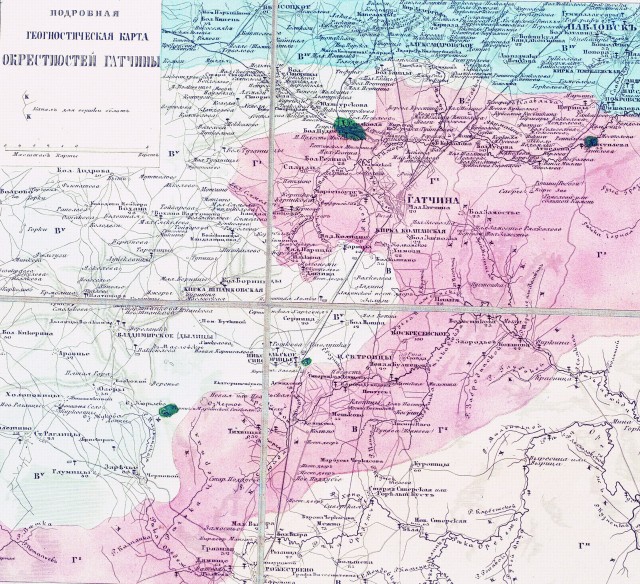
In subsequent years, maps of the atlas were refined by the expeditions of G.G. Basargin (1823-1825) to west coast, N.N. Muravyov-Karsky (1819-1821), G. S. Karelin (1832, 1834, 1836) and others - on the eastern coast of the Caspian. In 1847 I. I. Zherebtsov described the Kara-Bogaz-Gol bay. In 1856, a new hydrographic expedition was sent to the Caspian Sea under the leadership of N.A. Ivashintsov, who for 15 years carried out a systematic survey and description, drawing up several plans and 26 maps, covering almost the entire coast of the Caspian Sea.
In the XIX century. intensive work continued to improve the maps of the Baltic and White Seas. Outstanding achievement Russian hydrography was compiled by GA Sarychev "Atlas of the entire Baltic Sea ..." (1812). In 1834-1854. Based on the materials of the chronometric expedition of FF Schubert, maps of the entire Russian coast of the Baltic Sea were compiled and published.
Significant changes to maps Of the White Sea and the north coast Kola Peninsula introduced the hydrographic work of F.P. Litke (1821-1824) and M.F. Reinecke (1826-1833). Based on the materials of the Reinecke expedition in 1833, the Atlas of the White Sea ... was published; geographical description coasts. The Imperial Academy of Sciences awarded this work to M.F. Reinecke in 1851 with the full Demidov Prize.
Thematic mapping
The active development of basic (topographic and hydrographic) cartography in the 19th century. created the basis necessary for the development of special (thematic) cartography. Its intensive development dates back to the 19th and early 20th centuries.
In 1832, the Main Directorate of Railways published the Hydrographic Atlas of the Russian Empire. It includes general maps on scales of 20 and 10 versts in inches, detailed maps on a scale of 2 versts in inches and plans on a scale of 100 fathoms in inches and larger. Hundreds of plans and maps were compiled, which contributed to an increase in the cartographic study of territories along the routes of the corresponding roads.
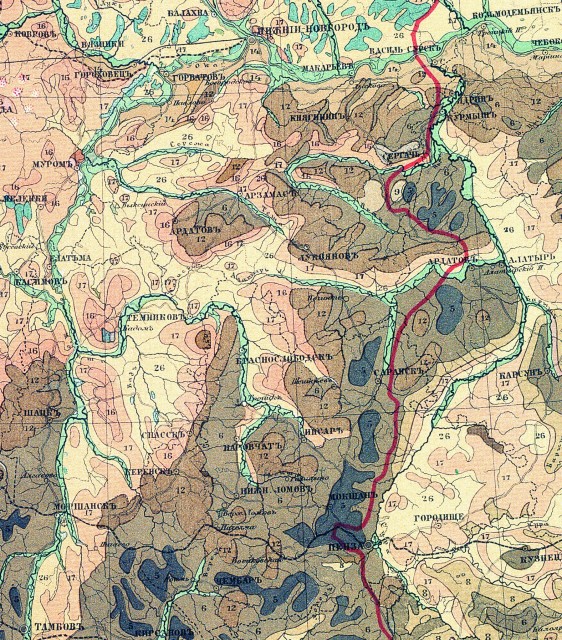
Significant cartographic work in the 19th and early 20th centuries. was carried out by the Ministry of State Property, formed in 1837, in which in 1838 the Corps of Civil Topographers was established, which carried out mapping of poorly studied and unexplored lands.
An important achievement of domestic cartography was the "Great World Table Atlas of Marx" published in 1905 (2nd edition, 1909), which contained over 200 maps and an index of 130 thousand geographical names.
Nature mapping
Geological mapping
In the XIX century. intensive cartographic study continued mineral resources Russia and their exploitation, special geognostic (geological) mapping is being developed. At the beginning of the XIX century. many maps of mountain districts, plans of factories, salt and oil fields, gold mines, quarries, mineral springs were created. The history of exploration and development of minerals in the Altai and Nerchinsk mountain districts is especially detailed in the maps.
Numerous maps of mineral deposits, plans of land plots and forest holdings, factories, mines and mines were compiled. An example of a collection of valuable handwritten geological maps is the atlas “Maps of Salt Fields”, compiled by the Mining Department. The maps in the collection mainly date from the 1920s and 1930s. XIX century. Many of the maps of this atlas are much wider in content than ordinary maps of salt fields, and are, in fact, early samples of geological (petrographic) maps. So, among the maps of G. Vansovich in 1825 there is a Petrographic map of the Bialystok region, Grodno and part of the Vilna province. The "Map of the Pskov and part of the Novgorod province: with an indication of mining and salt sources discovered in 1824 ..." also has a rich geological content.
An extremely rare example of an early hydrogeological map is “ Topographic map the Crimean peninsula ... "with the designation of the depth and quality of water in the villages, compiled by A. N. Kozlovsky in 1842 on a cartographic basis in 1817. In addition, the map contains information about the areas of territories with different water supply, as well as a table of the number of villages by counties in need of water supply.
In 1840-1843. English geologist R.I. Murchison, together with A.A.Keyserling and N.I.
In the 50s. XIX century. the first geological maps are being published in Russia. One of the earliest is the "Geognostic Map of St. Petersburg Province" (S. S. Kutorga, 1852). The results of intensive geological research found expression in the "Geological Map of European Russia" (AP Karpinsky, 1893).
The main task of the Geological Committee was to create a 10-verst (1: 420,000) geological map of European Russia, in connection with which a systematic study of the relief and geological structure of the territory began, in which such prominent geologists as I.V. Mushketov, A. P. Pavlov and others. By 1917, only 20 sheets of this map out of the planned 170 were published. began geological mapping of some regions of Asian Russia.
In 1895, the Atlas of Terrestrial Magnetism was published, compiled by AA Tillo.
Forest mapping
One of the earliest manuscript maps of forests is the Map for Observing the State of Forests and the Timber Industry in [European] Russia, compiled in 1840-1841, as established by M. A. Tsvetkov. The Ministry of State Property carried out major work on mapping state forests, the timber industry and timber-consuming industries, as well as on improving forest accounting and forest cartography. Materials for her were collected through inquiries through local government property departments, as well as other departments. In the final form in 1842, two maps were drawn; the first of them is a map of forests, the other was one of the earliest samples of soil-climatic maps, on which climatic zones and dominant soils in European Russia were indicated. Soil and climatic map has not yet been found.
The work on compiling a map of forests in European Russia revealed the unsatisfactory state of the device and mapping of forest resources and prompted the Scientific Committee of the Ministry of State Property to create a special commission to improve forest mapping and forest accounting. As a result of the work of this commission, detailed instructions and symbols were created for drawing up forest plans and maps, approved by Tsar Nicholas I. The Ministry of State Property paid special attention to the organization of work on the study and mapping of state lands in Siberia, which became especially widespread after the abolition of serfdom. in Russia in 1861, one of the consequences of which was the intensive development of the resettlement movement.
Soil mapping
In 1838, a systematic study of soils began in Russia. Mostly on the basis of questionnaires, many handwritten soil maps were compiled. A prominent economic geographer and climatologist Academician KS Veselovsky in 1855 compiled and published the first consolidated Soil Map of European Russia, which shows eight types of soils: chernozem, clay, sand, loam and sandy loam, silt, salt licks, tundra , swamps. The works of K.S. Veselovsky on climatology and soils of Russia were the starting point for the works on soil cartography of the famous Russian geographer and soil scientist V.V. soil formation. His book Cartography of Russian Soils, published by the Department of Agriculture and Rural Industry in 1879 as an explanatory text to the Soil Map of European Russia, laid the foundations of modern soil science and soil cartography. Since 1882 V.V.Dokuchaev and his followers (N.M.Sibirtsev, K.D.Glinka, S.S.Neustruev, L.I. in more than 20 provinces. One of the results of these works were soil maps of provinces (on a 10-verst scale) and more detailed maps of individual counties. Under the leadership of V.V.Dokuchaev, N.M.Sibirtsev, G.I.
Socio-economic mapping
Farm mapping
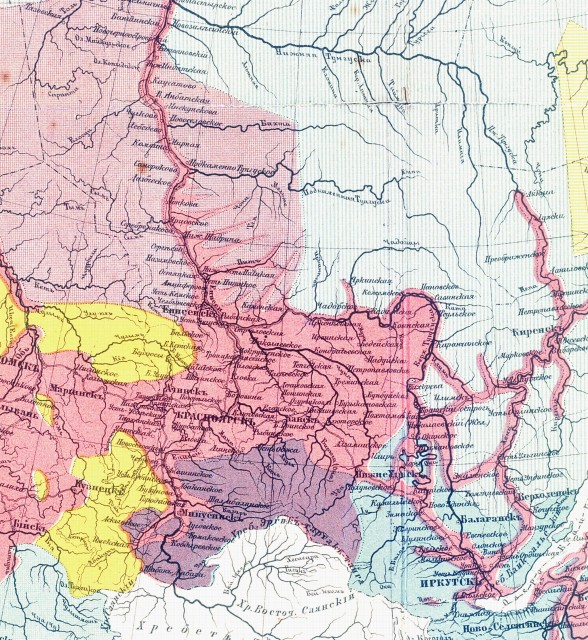
The development of capitalism in industry and agriculture necessitated a deeper study National economy... To this end, in the middle of the XIX century. overview economic maps and atlases begin to be published. The first economic maps of individual provinces (St. Petersburg, Moscow, Yaroslavl, etc.) are being created. The first economic map published in Russia was "Map of the industry of European Russia showing factories, factories and trades, administrative places for the manufacturing part, the main fairs, water and land communications, ports, lighthouses, customs, the main marinas, quarantines, etc. 1842" ...
A significant cartographic work is the "Economic and statistical atlas of European Russia from 16 maps", compiled and published in 1851 by the Ministry of State Property, which went through four editions - 1851, 1852, 1857 and 1869. It was the first economic atlas in our country dedicated to agriculture. It included the first thematic maps (soil, climatic, agricultural). An attempt is made in the atlas and its textual part to summarize the main features and directions of the development of agriculture in Russia in the 50s. XIX century.
Of undoubted interest is the handwritten "Statistical Atlas" compiled by the Ministry of Internal Affairs under the leadership of NA Milyutin in 1850. The Atlas consists of 35 maps and cartograms reflecting the most diverse socio-economic parameters. It, apparently, was compiled in parallel with the "Economic and statistical atlas" of 1851 and compared with it gives a lot of new information.
A major achievement of domestic cartography was the publication in 1872 of the "Maps of the most important sectors of productivity of European Russia" compiled by the Central Statistical Committee (about 1: 2,500,000). The publication of this work was facilitated by the improvement of the organization of statistical affairs in Russia, associated with the formation in 1863 of the Central Statistical Committee, headed by the famous Russian geographer, vice-chairman of the Imperial Russian Geographical Society, P.P. Semyonov-Tyan-Shansky. The materials collected over the eight years of the existence of the Central Statistical Committee, as well as various sources from other departments, made it possible to create a map that multifaceted and reliably characterizes the economy of post-reform Russia. The map has been an excellent reference and valuable research material. Distinguished by the completeness of the content, expressiveness and originality of the methods of mapping, it is a remarkable monument to the history of Russian cartography and a historical source that has not lost its significance up to the present time.
The first capital atlas of industry was the “Statistical Atlas of the Main Branches of Factory Industry in European Russia” by DA Timiryazev (1869-1873). At the same time, maps of the mining industry (Ural, Nerchinsk district, etc.), maps of the location of the sugar industry, agriculture, etc., transport and economic maps of freight flows along railways and waterways were published.
One of the best works of Russian socio-economic cartography of the early XX century. is the "Commercial and industrial map of European Russia" VP Semyonov-Tyan-Shan scale 1: 1,680,000 (1911). This card presented synthesis economic characteristics many centers and districts.
It is worth dwelling on one more outstanding cartographic work created by the Department of Agriculture of the Main Directorate of Agriculture and Land Management before the First World War. This is an atlas album "Agricultural Industry in Russia" (1914), representing a collection of statistical maps of the country's agriculture. This album is interesting as an experience of a kind of "cartographic propaganda" of the potential possibilities of agricultural economy in Russia for attracting new investments from abroad.
Population mapping
P.I.Keppen organized a systematic collection of statistical data on the number, national composition and ethnographic characteristics of the population of Russia. The work of PI Keppen resulted in the “Ethnographic Map of European Russia” on a scale of 75 versts per inch (1: 3,150,000), which went through three editions (1851, 1853 and 1855). In 1875, a new large ethnographic map of European Russia was published on a scale of 60 versts per inch (1: 2,520,000), compiled by the famous Russian ethnographer, Lieutenant General AF Rittich. At the Paris International Geographic Exhibition, the map received a 1st class medal. Ethnographic maps of the Caucasian Territory at a scale of 1: 1,080,000 (A.F. Rittich, 1875), Asian Russia (M.I.Venyukov), the Kingdom of Poland (1871), Transcaucasia (1895), etc. were published.
Among other thematic cartographic works, the first map of the population density of European Russia, compiled by N.A. Alaska.
Integrated research and mapping
In the years 1850-1853. The police department issued atlases of St. Petersburg (compiled by N.I. Tsylov) and Moscow (compiled by A. Khotev).
In 1897, V.V.Dokuchaev's student GI Tanfilyev published the zoning of European Russia, which was first called physical-geographical. Tanfiliev's scheme clearly reflected zoning, and also outlined some significant intrazonal differences in natural conditions.
In 1899, the world's first National Atlas of Finland, which was part of the Russian Empire, but had the status of an autonomous Grand Duchy of Finland, was published. In 1910 the second edition of this atlas appeared.
The highest achievement of pre-revolutionary thematic cartography was the capital Atlas of Asiatic Russia, published in 1914 by the Resettlement Administration, with an appendix of an extensive and richly illustrated text in three volumes. The atlas reflects the economic situation and conditions of agricultural development of the territory for the needs of the Resettlement Administration. It is interesting to note that this edition for the first time included a detailed review of the history of mapping of Asian Russia, written by a young naval officer, later the famous historian of cartography, L. S. Bagrov. The content of the maps and the accompanying text of the atlas reflects the results of the great work of various organizations and individual Russian scientists. The Atlas for the first time contains an extensive set of economic maps of Asian Russia. Its central section is made up of maps, on which the general picture of land tenure and land use is shown with backgrounds of different colors, which reflects the results of the ten-year activity of the Resettlement Directorate for the settlement of migrants.
A special map has been placed on the distribution of the population of Asian Russia by religion. Three maps are dedicated to cities, which show their population, budget growth and debt. The agricultural cartograms show the share of different crops in field cultivation and the relative number of the main livestock species. Mineral deposits are marked on a separate map. Special maps of the atlas are devoted to communication routes, post offices and telegraph lines, which, of course, were of extreme importance for the sparsely populated Asiatic Russia.
So, by the beginning of the First World War, Russia came with a cartography that provided the needs of the defense, the national economy, science and education of the country, at a level that fully corresponded to its role as a great Eurasian power of its time. By the beginning of the First World War, the Russian Empire possessed vast territories, displayed, in particular, on the general map of the state, published by A.A. Ilyin's cartographic institution in 1915.
I would be grateful if you share this article on social networks:
Site search.




